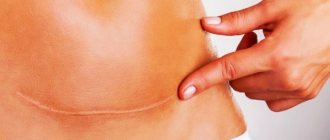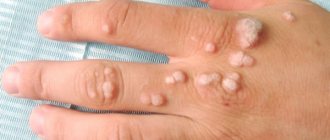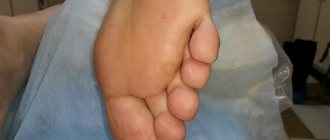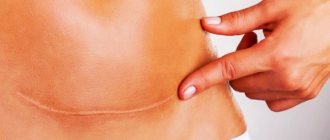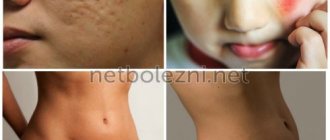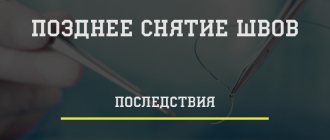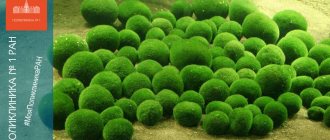Summer has come - a time for active recreation, summer cottages and vegetable gardens. A time of abrasions and wounds, and therefore a high demand for antiseptics. More than 250 trade names of antiseptics in the form of ointments, solutions, sprays and powders are registered in Russia. Let's figure out which drugs are classified as antiseptics in medicine, how they differ from each other, and which of them can be recommended for every home medicine cabinet.
First of all, we note that the pharmacist independently selects the product only for external use, and the choice of antiseptic for the mucous membranes of the nasopharynx, gastrointestinal tract, respiratory and urinary tract, as well as for the genital organs remains with the doctor. We also remind you that many antiseptics cannot be applied to injured skin. Here are two main points to consider when selling and talking to a client. The mechanism of action of antiseptics may be different, depending on the main active ingredient.
Classification of antiseptics
Halides (halogens and halogen-containing compounds) Chlorine or iodine compounds (antiformin, iodoform, iodinol, Lugol's solution, chloramine B, chlorhexidine).
The bactericidal effect is based on the fact that upon contact with organic substrates, these products release active halogens - chlorine and iodine, which destroy the proteins of microorganisms. Due to their high bactericidal activity, they are widely used both in medical institutions and at home. Oxidizing agents (hydrogen peroxide, potassium permanganate, hydroperite). In contact with tissues, they release active oxygen, which creates unfavorable conditions for the development of anaerobic and putrefactive microbes. They are used to a limited extent due to their moderate bactericidal activity and short shelf life. Acids (salicylic, boric). A shift in pH to the acidic side leads to denaturation of the protoplasmic protein of the bacterial cell. Salicylic acid has a weak antiseptic effect, and boric acid has a large number of side effects associated with toxicity. Currently, antiseptics for treating skin are practically not used as antiseptics. Alkalies (ammonia, sodium tetraborate). Currently, drugs are practically not used as antiseptics due to their low antiseptic activity. Aldehydes (formalin, lysoform). Penetrating inside the microbial cell, they come into contact with the amino groups of proteins, which leads to cell death. The same effect explains the strong irritant effect on human mucous membranes and skin. Currently, they are used more for disinfecting surfaces in medical institutions. Alcohols (ethyl). They dehydrate tissues and irreversibly coagulate the proteins of microorganisms. They are used quite widely and have a pronounced antiseptic effect. In 2006, the WHO declared alcohol-based hand sanitizers to be the gold standard for hand sanitizers. Cationic antiseptics (benzyldimethyl-myristoylamino-propylammonium). The active substance acts on the membranes of microorganisms, leading to their death. It has a very wide spectrum of antimicrobial action, stimulates the immune system, and accelerates the healing process of wounds. Widely used in surgery, obstetrics, gynecology, traumatology, burn therapy, otorhinolaryngology and other fields of medicine. Salts of heavy metals (preparations of mercury, silver, copper, zinc, lead). The antimicrobial effect is associated with blocking the sulfhydryl groups of microbial enzymes. Use is limited due to toxicity. Dyes (methylene blue, brilliant green, fucorcin). They are active against gram-positive bacteria and cocci. Methylene blue has a very weak antiseptic effect and is practically not used. Herbal antibacterial drugs (urzaline, calendula tincture, imanin and others). Weak antiseptic properties. Rarely used. All these substances have different degrees of activity, antimicrobial spectrum and toxicity. To understand how to choose the right antiseptic, you need to be guided by all these characteristics in accordance with the intended purpose: primary wound treatment, treatment of festering wounds, or treatment of damaged mucous membranes or intact skin/mucous membranes. When choosing which antiseptic to treat a particular wound, you must also follow the instructions in order to avoid side effects, as well as determine the dosage required in a particular case. Let's take a closer look at the most popular antiseptics.
The postoperative suture does not heal, it is red, inflamed: what to do?
One of a number of postoperative complications is inflammation of the suture. This process is accompanied by such phenomena as:
- swelling and redness in the suture area
- pain
- the presence of a seal under the seam that can be felt with your fingers
- increased temperature and blood pressure
- general weakness and muscle pain
The reasons for the appearance of the inflammatory process and further non-healing of the postoperative suture can be different:
- infection in a postoperative wound
- During the operation, the subcutaneous tissues were injured, resulting in the formation of hematomas
- suture material had increased tissue reactivity
- in overweight patients, wound drainage is insufficient
- low immunity of the patient being operated on
Often there is a combination of several of the listed factors that may arise:
- due to an error by the operating surgeon (instruments and materials were not processed sufficiently)
- due to patient non-compliance with postoperative requirements
- due to indirect infection, in which microorganisms are spread through the blood from another source of inflammation in the body
If you see redness of the suture, consult a doctor immediately
. In addition, the healing of a surgical suture largely depends on the individual characteristics of the body:
- weight – in obese people, the wound after surgery may heal more slowly
- age – tissue regeneration occurs faster at a young age
- nutrition – lack of proteins and vitamins slows down the recovery process
- chronic diseases – their presence prevents rapid healing
If you notice redness or inflammation of a postoperative suture, do not delay visiting a doctor. It is the specialist who must examine the wound and prescribe the correct treatment:
- remove stitches if necessary
- washes the wounds
- install drainage to drain purulent discharge
- will prescribe the necessary medications for external and internal use
Timely implementation of the necessary measures will prevent the likelihood of severe consequences (sepsis, gangrene). After medical procedures have been performed by your attending physician, to speed up the healing process at home, follow these recommendations:
- treat the suture and the area around it several times a day with the medications prescribed by the attending physician
- While showering, try not to touch the wound with a washcloth. When you get out of the bath, gently blot the seam with a bandage.
- change sterile dressings on time
- take multivitamins
- add extra protein to your diet
- do not lift heavy objects
Take vitamins to help the suture tighten better.
In order to minimize the risk of an inflammatory process, it is necessary to take preventive measures before surgery:
- boost your immunity
- sanitize your mouth
- identify the presence of infections in the body and take measures to get rid of them
- strictly observe hygiene rules after surgery
Hydrogen peroxide
Only a 3% solution is used to treat wounds (a higher concentration can cause a chemical burn). It is also used as a hemostatic agent. Hydrogen peroxide is an excellent remedy for primary wound treatment (washing), as it has great cleaning ability - dirt particles and damaged cells are mechanically removed with the resulting foam. You can treat wounds both on the surface of the skin and on the mucous membranes. Hydrogen peroxide is generally not used on healing wounds, as it prolongs the period of complete healing. It is also not used for deep wounds and is not injected into body cavities. When stored in light, it loses its active properties. Open packaging is stored for about a month, closed - 2 years.
Iodine/povidone-iodine
Used in an alcohol solution (the so-called “tincture of iodine”) or in Lugol’s solution. Only the edges of the wound are treated with iodine so as not to cause soft tissue burns. The great advantage of iodine is its wide spectrum of antimicrobial activity: it kills all major pathogens and, with prolonged exposure, even spores - the most resistant forms of microorganisms. The use of large amounts of iodine is contraindicated in cases of hypersensitivity to it, hyperfunction of the thyroid gland, thyroid formations, dermatitis, and kidney diseases. Application to mucous membranes is not advisable, especially in children.
Plaster for healing postoperative sutures
One of the effective means for caring for postoperative sutures is a patch made from medical silicone. This is a soft self-adhesive plate that is fixed to the seam, connecting the edges of the fabric, and is suitable for minor damage to the skin. The advantages of using the patch are as follows:
- prevents pathogenic microorganisms from entering the wound
- absorbs discharge from the wound
- does not cause irritation
- breathable, allowing the skin under the patch to breathe
- Helps soften and smooth out scars
- retains moisture well in fabrics, preventing drying out
- prevents scar enlargement
- easy to use
- There is no skin injury when removing the patch
Post-operative plaster
Some patches are waterproof, allowing the patient to shower without risk of suture damage. The most commonly used patches are:
- cosmopore
- mepilex
- mepitak
- hydrofilm
- fixopore
To achieve positive results in the healing of postoperative sutures, this medical product must be used correctly:
- remove the protective film
- apply the adhesive side to the seam area
- change every other day
- periodically peel off the patch and check the condition of the wound
We remind you that before using any pharmacological agent, you must consult your doctor.
Chlorhexidine bigluconate
Belongs to the group of halogens. Typically used in concentrations of 0.5–4.0%. At lower concentrations, the bactericidal activity of chlorhexidine decreases, therefore, as an antiseptic in this case, it is used only in an alcohol solution. Chlorhexidine has bacteriostatic, fungicidal, antiviral properties. However, 1% chlorhexidine against fungi and mycobacteria tuberculosis has a weaker effect compared to povidone-iodine. The drug can be used for the initial treatment of injured skin areas, as well as to accelerate the healing of purulent wounds and for the treatment of damaged mucous membranes. In most cases it is well tolerated. There are no age restrictions for use - a good antiseptic option for children. It is not recommended to use together with iodine preparations (often skin irritation).
Postoperative fistula: causes and methods of control
One of the negative consequences after surgery is a postoperative fistula , which is a channel in which purulent cavities are formed. It occurs as a consequence of the inflammatory process when there is no outlet for purulent fluid. The reasons for the appearance of fistulas after surgery can be different:
- chronic inflammation
- the infection is not completely eliminated
- rejection by the body of non-absorbable suture material
The last reason is the most common. The threads that connect tissues during surgery are called ligatures. Therefore, a fistula that occurs due to its rejection is called ligature. A granuloma forms around the thread , that is, a compaction consisting of the material itself and fibrous tissue. Such a fistula is formed, as a rule, for two reasons:
- entry of pathogenic bacteria into the wound due to incomplete disinfection of threads or instruments during surgery
- weak immune system of the patient , due to which the body weakly resists infections, and there is a slow recovery after the introduction of a foreign body
A fistula can appear in different postoperative periods:
- within a week after surgery
- after a few months
Signs of fistula formation are:
- redness in the area of inflammation
- the appearance of compactions and tubercles near or on the seam
- painful sensations
- edema
- discharge of pus
- temperature increase
After surgery, a very unpleasant phenomenon may occur - a fistula.
If you observe the listed symptoms, be sure to consult a doctor. If measures are not taken in time, the infection can spread throughout the body.
Treatment of postoperative fistulas is determined by the doctor and can be of two types:
- conservative
- surgical
The conservative method is used if the inflammatory process has just begun and has not led to serious disorders. In this case, the following is carried out:
- removal of dead tissue around the seam
- washing the wound from pus
- removing the outer ends of the thread
- patient taking antibiotics and immune-boosting drugs
The surgical method includes a number of medical measures:
- make an incision to drain the pus
- remove the ligature
- wash the wound
- if necessary, perform the procedure again after a few days
- if there are multiple fistulas, you may be prescribed complete excision of the suture
- the stitches are reapplied
- a course of antibiotics and anti-inflammatory drugs is prescribed
- complexes of vitamins and minerals are prescribed
- standard therapy prescribed after surgery is carried out
Often the fistula has to be removed surgically.
Recently, a new method of treating fistulas has appeared - ultrasound. This is the most gentle method. Its disadvantage is the length of the process. In addition to the methods listed, healers offer folk remedies for the treatment of postoperative fistulas:
- the mummy in water and mix with aloe juice. Soak a bandage in the mixture and apply to the inflamed area. Keep it for several hours
- wash the wound with a decoction of St. John's (4 tablespoons of dry leaves per 0.5 liters of boiling water)
- take 100 g of medical tar , butter, flower honey, pine resin, crushed aloe leaf. Mix everything and heat in a water bath. Dilute with medical alcohol or vodka. Apply the prepared mixture around the fistula, cover with film or plaster
- cabbage leaf to the fistula at night
A fistula can also be removed using folk remedies.
However, do not forget that folk remedies are only auxiliary therapy and do not cancel a visit to the doctor. To prevent the formation of postoperative fistulas it is necessary:
- Before the operation, examine the patient for the presence of diseases
- prescribe antibiotics to prevent infection
- carefully handle instruments before surgery
- avoid contamination of suture materials
Benzyldimethylmyristoylaminopropylammonium
It is used as a solution for washing wounds or as an ointment for application to purulent wounds. It is active against viruses, bacteria, fungi, and protozoa, but has virtually no effect on human cell membranes, unlike chlorhexidine. It has an antiseptic, immunostimulating and wound-healing effect. The immunostimulating effect is associated with the ability of the drug to increase the activity of phagocytes and macrophages. The positive effect on wound healing is explained by the fact that the active substance absorbs pus and fluid released during inflammation of wounds. At the same time, the product does not irritate healthy tissues and does not interfere with the growth of new tissues. The main indication for use is the prevention of suppuration and treatment of purulent wounds. Can be applied to mucous membranes. Can be used to treat wounds for children over 3 years of age.
What to do if a seal appears at the site of the postoperative suture?
Often, after the operation, a patient experiences a seal under the suture, which is formed due to the accumulation of lymph. As a rule, it does not pose a threat to health and disappears over time. However, in some cases complications may arise in the form of:
- inflammation – accompanied by painful sensations in the suture area, redness is observed, and the temperature may rise
- suppuration – when the inflammatory process is advanced, pus may leak from the wound
- the formation of keloid scars is not dangerous, but has an unaesthetic appearance. Such scars can be removed using laser resurfacing or surgery.
If you observe the listed signs, contact the surgeon who operated on you. And if this is not possible, go to the hospital at your place of residence.
If you see a lump, consult a doctor
Even if it later turns out that the resulting lump is not dangerous and will resolve on its own over time, the doctor must conduct an examination and give his opinion. If you are convinced that the postoperative suture seal is not inflamed, does not cause pain and there is no purulent discharge, follow these requirements:
- Follow the rules of hygiene. Keep bacteria away from the injured area
- treat the seam twice a day and change the dressing material promptly
- When showering, avoid getting water on the unhealed area
- don't lift weights
- make sure that your clothes do not rub the seam and the areola around it
- Before going outside, apply a protective sterile bandage
- Do not under any circumstances apply compresses or rub yourself with various tinctures on the advice of friends. This can lead to complications. A doctor must prescribe treatment
Maintain hygiene after surgery
Compliance with these simple rules is the key to successful treatment of suture seals and the possibility of getting rid of scars without surgical or laser technologies.
Brilliant green solution
Everyone's favorite "green". Available in the form of alcohol solutions and pencils. It has a moderate antiseptic effect and is effective against gram-positive bacteria. Only the edges of the wounds are treated with the solution, without going into damaged tissue. Has a drying effect. It is used until the period when fresh granulation tissue begins to appear in the wound, since long-term use prevents adequate healing of the wound edges. Can be used as a children's antiseptic.
How long does it take for a wound to heal after surgery?
The rate of healing of a postoperative wound depends on many conditions. Among them:
- age;
- body mass;
- state of immunity;
- state of the cardiovascular system.
On average, it takes about 3 months from the moment of surgery to the formation of a scar. Depending on the complexity of the operation and if there are complications, this period may last 12 months. Tissue regeneration takes place in 4 stages.
- Inflammation (5–7 days). The body's standard defense reaction to damage. During this period, there is an increased production of substances that stimulate blood clotting.
- Polyferation (from 10 days to 1 month). At this stage, the formation of young connective (granulation) tissue, penetrated by a dense network of microvessels, occurs. At first it is bright red in color and grainy in consistency, but as the wound heals it becomes pale and smooth, and its bleeding decreases.
- Epithelization (from 1 to 3 months). The connective tissue is finally formed. Skin begins to form at the site of the wound. The number of vessels decreases, a scar forms.
- Scar formation (from 3 to 12 months). Temporary vessels completely disappear. Fibers of collagen and elastin - elements of connective tissue - form the scar.
Fukortsin
Coloring antiseptic. A combination of fuchsin, boric acid, phenol, acetone, resorcinol and ethanol. Indications for the use of fucorcin are fungal and pustular skin diseases, abrasions, cracks, etc. Apply to the edges of wounds. Has less drying effect than brilliant green and iodine. It is used much less frequently in wound treatment. It is undesirable to use in children due to the boric acid and phenol contained in it, which have a large number of side effects. When applied to the skin, boric acid easily penetrates the blood (especially in children) and enters the internal organs and tissues, accumulating there. Therefore, long-term use can cause intoxication. This property forced us to sharply limit the use of boric acid, especially in childhood. Phenol also has the ability to easily penetrate the skin and lead to intoxication of internal organs.
Octenidine (octenidine dihydrochloride)
A cationic surfactant with antimicrobial activity against gram-positive and gram-negative bacteria, viruses, as well as against yeast-like fungi and dermatophytes (fungi that feed on keratin and cause dermatomycosis). Similar in action to quaternary ammonium compounds (QAC). The damaged surface is completely processed. Can be used on mucous membranes. The antiseptic has no age restrictions and is used for children. Currently, it is the drug of choice in Europe as an antiseptic due to its wide spectrum of action and maximum speed of achieving effect.
Table 1. Comparative characteristics of the main antiseptic agents
| Antiseptic | For leather processing | For treating wounds | For mucous membranes | Applicability for children |
| Ethanol | + | _ | _ | — |
| Hydrogen peroxide | + | + | + | + |
| Iodine | + | _ | — / + | — / + |
| Chlorhexidine | + | + | + | + |
| Potassium permanganate | + | _ | _ | + |
| Diamond green | + | _ | _ | + |
| Fukortsin | + | _ | _ | _ |
| Benzyldimethylmyristoylaminopropylammonium | + | + | + | + |
| Octenidine | + | + | + | + |
In every first aid kit
So, what products can a pharmacy worker recommend to a buyer for a home first aid kit? First of all, these are benzyldimethyl-myristoylamino-propylammonium and octenidine, as the most universal and safe agents. These drugs are the drugs of choice and should be recommended first. Chlorhexidine is also quite versatile, which is used on intact tissues and for treating wounds, including mucous membranes. As for solutions of brilliant green and iodine, it is necessary to inform the buyer that these antiseptics are only suitable for treating wound edges and should not be used on mucous membranes. Thus, among the entire list of antiseptics presented on the pharmaceutical market, a fairly small number of drugs have universal application possibilities.
Sources
- Kharkevich D. A. Pharmacology. M. Geotar Medicine. 2010.
- Blatun L. A. Miramistin in a comprehensive program to combat hospital infections in a surgical hospital // Miramistin: application in surgery, traumatology and combustiology: collection of works / ed. Yu. S. Krivosheina. M., 2006.
- Carolin Fromm-Dornieden, Gorovtsov A. V., Nadine Schӓfer, Ewa K. Stuermer. Comparison of the rate of growth suppression of E. COLI, STAPHYLOCOCCUSAUREUS and PSEUDOMONASAERUGINOSA by modern antiseptics for the purpose of their use for infected wounds // Fundamental Research. — 2013. — No. 10–2.
Additional recommendations for suture care after surgery
In addition to medical procedures, certain lifestyle adjustments are also necessary in the postoperative period. In particular, the following rules must be adhered to:
- Limit physical activity. Any high and medium intensity exercise (running, aerobics, etc.) during this period is strictly contraindicated.
- Avoid heavy lifting. As a rule, a person who has undergone surgery should not lift more than 2–2.5 kg. This rule is especially relevant when caring for a suture on the abdomen after surgery.
- Limit mobility in the waist area (avoid sharp and high-amplitude bends and turns of the body) after abdominal surgery.
- Carry out water procedures with great care. Before the stitches are removed, or better yet, before a scar forms, it is strongly recommended not to wet the wound.
- Avoid any pressure on the wound. When it comes to how to care for a suture after surgery, this is one of the main rules.
- In cases where surgery was performed on an arm or leg, the injured limb should be placed above the level of the heart (for example, placed on a pillow) during sleep. If the wound is above the level of the neck, then it is better to sleep with the head of the bed raised by 45° (two pillows are enough for this).
- During abdominal operations, observe bed rest until the doctor allows you to break it. To avoid bedsores and improve blood circulation, you can perform simple movements such as lifting your limbs and performing light self-massage.
- Strictly follow the diet prescribed by your doctor (especially after abdominal surgery).
- Protect the wound from exposure to direct sunlight. After the tissue has healed and until a full-fledged skin forms in this area, you can use sunscreen.
